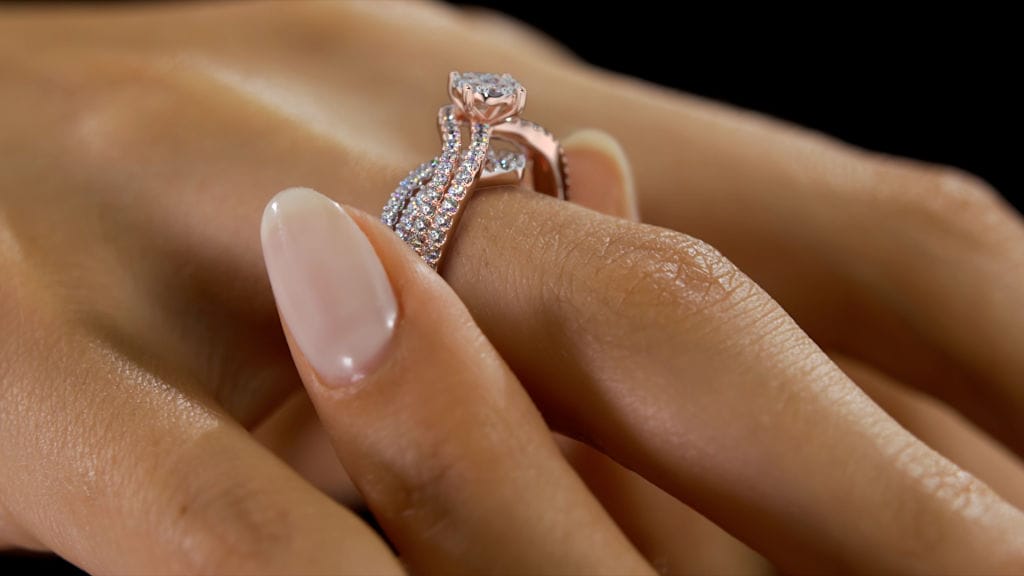In the few short decades since laboratory-created diamonds emerged, they’ve already turned the jewelry world on its head. Once a novel alternative, these synthetic stones now challenge the standing of natural diamonds in both demand and desirability. The industry’s shift is spurred by younger generations—Millennials and Generation Z—who value ethical practices and environmental mindfulness in luxury purchases, leading many to wonder: Will this generational shift drive a total departure from traditionally mined gemstones?
Yet, just as the diamond industry began to adjust to this disruption, a new wave of innovation has sparked fresh debate. Recently, news circulated about a surprising new listing on the global marketplace, Alibaba: lab-grown diamond equipment, offered at a price accessible to some small business owners. Could this development signal the dawn of “do-it-yourself” diamonds? Are we on the brink of seeing diamond-production workshops emerge with the same ease as backyard gardens? Will lab-grown gems become as commonplace as artisan goods at local markets?
Affordable Equipment: A New Frontier for Diamond Creation?
The democratization of diamond manufacturing seems unstoppable. Engineers continuously innovate, working to make the creation of lab-grown diamonds less costly. Scientists explore groundbreaking methods for diamond synthesis, while tinkerers and small-business hopefuls seek to construct diamond-making machines from everyday components.
Alibaba’s offer of diamond-growing equipment could inspire would-be entrepreneurs who dream of breaking into the gemstone market. For those willing to invest around $200,000—the starting price for this machinery—this may be a viable path, particularly for individuals who might have once earmarked that amount for a luxury car instead. But could this really become a viable side business for home workshops, or even a sustainable new industry segment? Experts caution against such optimism. The journey from machinery purchase to polished diamond production is fraught with complexity, and it’s worth consulting professionals before hitting “buy.”
Is the Lab-Created Diamond Industry Truly Profitable?
The potential for lab-grown diamonds extends far beyond traditional jewelry; they’re valuable across a wide array of industries. This diversification lends weight to the idea of a booming artificial diamond market. Alongside their decorative use, lab-grown diamonds find applications in fields such as:
- Electronics: Their thermal conductivity makes diamonds useful in semiconductors.
- Industrial Applications: Diamonds play a crucial role in high-durability cutting, grinding, and polishing tools.
- Research and Development: Lab diamonds are essential in creating advanced materials, quantum computing experiments, and more.
- Optics: Diamonds contribute to the production of high-precision lenses and telescopes.
- Healthcare: Diamonds aid in the creation of innovative medical instruments, helping to advance treatments for cancer and various other conditions.
For businesses eyeing the diamond sector, the market potential is indeed compelling. The past few years show remarkable growth in the synthetic diamond industry:
- In 2016, the market for lab-grown diamonds was valued at approximately $1 billion.
- By 2022, this figure surged to nearly $12 billion.
- In 2023, the market added another $1 billion, reaching $13 billion.
- Projections suggest the industry could expand to $22 billion by 2031.
Jewelry alone presents an enormous market, with a rising demand for diamonds unassociated with traditional mining.
Jewelry with Synthetic Diamonds: Affordable Luxury
For many, synthetic diamonds have made the dream of diamond jewelry more attainable. From engagement rings to bracelets, these lab-grown gems offer consumers the brilliance of a natural diamond at a fraction of the cost. This affordability, combined with the demand for sustainable practices, has fueled substantial growth. Certain fashion subcultures, like hip-hop, have enthusiastically embraced synthetic diamonds, driving demand for items like diamond-studded grills and thick chains at accessible prices.
The surge in synthetic diamond jewelry sales has been impressive. Ankur Daga, CEO of a fine jewelry company, notes that in just six years, sales of engagement rings featuring lab-grown diamonds have jumped from 2% to 50% of all rings sold. The environmental consciousness of Millennials and Generation Z only amplifies this trend, making lab-grown diamonds a natural choice for new generations prioritizing ethical consumption.
Establishing a Lab-Grown Diamond Operation: The Practical Realities
Europe’s largest diamond manufacturer, Madestones, recently shed light on the science of lab-grown diamonds. The process relies on two primary techniques:
- HPHT (High Pressure, High Temperature). This method grows a diamond from a seed by subjecting it to extreme pressure (70 bars) and temperatures exceeding 1500°C, with a growth period of several weeks.
- CVD (Chemical Vapor Deposition). This approach requires a diamond plate and temperatures around 800-900°C. Here, synthesis occurs over several weeks through the interaction of hydrogen and methane gases.
Given these complex requirements, it becomes clear that setting up a synthetic diamond operation is far from a simple task. Even with machinery sourced from Alibaba, achieving and maintaining the necessary conditions—particularly such high pressures and temperatures—requires specialized expertise, regulatory approval, and extensive safety measures. Furthermore, the expenses involved in building a suitable workspace, obtaining certifications, and acquiring high-quality raw materials could easily surpass the initial cost of the equipment.
Hiring skilled operators—professionals capable of growing market-grade diamonds—also demands a substantial budget. These factors collectively point to a reality: while the accessibility of lab-grown diamonds may be expanding, garage workshops are unlikely to replace certified laboratories anytime soon.
Yet, the trajectory of this trend warrants close attention. Technologies are advancing, costs are dropping, and as more players enter the market, the synthetic diamond industry grows ever more robust.
The Bottom Line: A Glittering but Complex Opportunity
The diamond industry stands on the cusp of transformation, with lab-grown gems bringing about a paradigm shift that was once unimaginable. But despite the allure of DIY diamonds, the journey from interest to production remains highly challenging. Equipment, expertise, and regulatory factors form substantial barriers, and entering this industry on a small scale is far from straightforward.
Nevertheless, as technologies improve, the question remains: could the dream of personal diamond production move from science fiction to reality? For now, the established labs still reign supreme, but if the momentum persists, the diamond landscape may soon reflect a more inclusive—if unconventional—vision of the industry.




